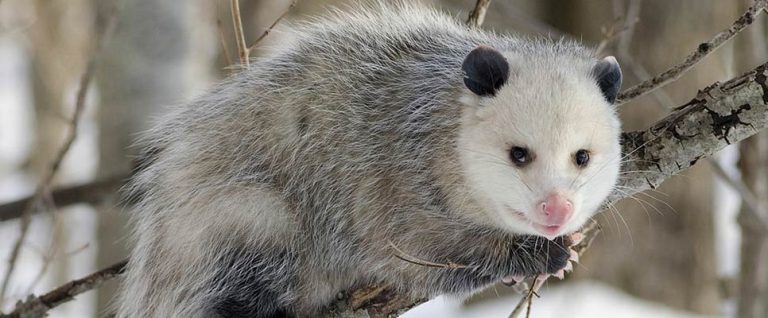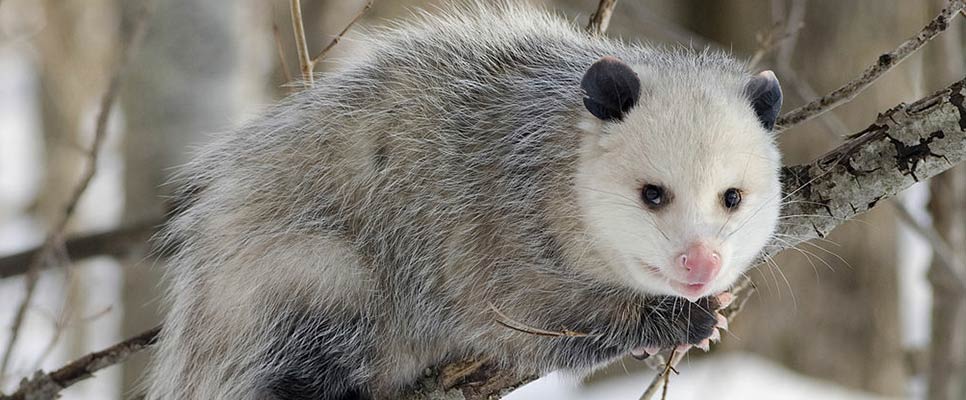
How To Identify If Its A Raccoon Or Possum In Your House
The living things that nature has given us are very diverse and each one is specially fit to its surroundings. The raccoon and the possum, two nocturnal mammals that share the same life patterns yet have unique traits, are among the curious animals which make up our ecosystems. We’ll explore the basic differences between raccoons and possums in this blog, highlighting their physical characteristics, habits, habitats, and ecological functions so that you can easily identify possums and take necessary measures for possum removal.

| Characteristic | Raccoons | Possums |
| Scientific Name | Procyon lotor | Various species (e.g., Didelphis spp.) |
| Family | Procyonidae | Didelphidae |
| Native Range | North America+Australia | Americas+Australia |
| Physical Appearance | Medium-sized mammals with grey fur | Smaller marsupials with grey or brown fur |
| Tail | Long, bushy tail with alternating rings | A long, hairless, and prehensile tail |
| Diet | Omnivorous – eats plants, fruits, insects, small mammals, etc. | Omnivorous – eats fruits, insects, small mammals, etc. |
| Nocturnal or Diurnal | Nocturnal (active at night) | Nocturnal (active at night) |
| Climbing Abilities | Excellent climbers and tree-dwellers | Good climbers, aided by a prehensile tail |
| Habitat | Woodlands, forests, urban areas | Forests, grasslands, urban areas |
| Reproduction | Give birth to 2-5 cubs in the spring | Give birth to multiple tiny, underdeveloped young (joeys) |
| Pouch | No pouch | Females have a pouch to carry and nurse young |
| Lifespan | Typically 12-13 years in the wild | Typically 5-6 years in the wild |
| Behaviour | Intelligent, curious, and adaptable | Timid and shy, often plays dead when threatened |
Physical Features
- Raccoons:
The medium-sized mammals known as raccoons are identified by their unique black “mask” marks around their eyes and large, ringed tails. They have a strong body covered in thick, dark greyish-black fur. They use their five long, flexible front paws, which are like hands, to control things and food.
- Possums:
Possums, often known as opossums in North America and Possum in Australia, are part of a separate group and have aggressive features. They have a pointed face, an extended snout, and a pink, hairless tail. They are smaller than raccoons. They have big, rounded ears and grey to brown fur that varies in colour.
Behaviour
- Raccoons:
Raccoons are very vibrant and flexible animals. They eat a variety of foods, including fruits, nuts, insects, small animals, and even leftover human food. They are omnivorous. Raccoons are renowned for their skill and can swim, climb trees, and open locks with ease. Although generally nocturnal, they can also be active at dawn and dusk.
- Possums:
Possums have fewer minds than raccoons and live alone. They are opportunistic feeders who primarily eat carrion, fruits, and insects. Hunters lose interest due to this impulsive response, which allows the possum to run away.
Habitat:
- Raccoons:
Raccoons are extremely versatile and can be found in various habitats, including marshes, woodlands, urban areas, and suburban regions. Due to their superb swimming abilities and enjoyment in foraging for aquatic species, they prefer locations with access to water sources.
- Possums:
Possums live in a variety of settings, such as meadows, cities, and forests. They build nests in trees, logs, and brush piles, although they have also been observed taking refuge in abandoned animal caves or burrows.
Effect on the Environment:
- Raccoons:
As seed dispersers, raccoons are vital to the environment. They help in the spreading of seeds and support the regrowth of forests by consuming fruits and nuts. They also assist in reducing rodent and bug populations, which is advantageous to both people and other species.
- Possums:
Possums support the ecosystem by eating a lot of insects, including dangerous pests. They can help clean up carrion as hunters, lowering the danger of disease spread. Possums additionally contribute to the stability of the food chain by serving as prey for a variety of animals.
Reproduction and Life Cycle:
- Raccoons:
The breeding season for raccoons is in the late winter or early spring. After a gestation period of around 63 days, female raccoons typically give birth to a litter of 2 to 5 kits. The mother tends to her fragile and blind kits in a den or nesting place, eventually exposing them to the outer world as they mature. The young raccoons grow more independent after weaning at roughly 2-3 months and may leave their mother’s area after 6–9 months.
- Possums:
Female possums can reproduce at any time of the year and have shorter reproductive cycles than other mammals. They typically have a gestation period of about 16 to 18 days. After this short gestation period, the underdeveloped young, called “joeys,” are born and crawl into the mother’s pouch, where they continue their development while nursing and receiving nourishment from the mother’s milk. The little possums ride on their mother’s back after escaping from the bag at about 2-3 months, where they continue to receive care and protection. Little possums are self-sufficient by 6-7 months of age and begin to create their territories.
Raccoon versus Possum: An Analysis of Threat Responses
When comparing raccoons and possums, it’s essential to understand their distinct approaches to dealing with threats. Raccoons, known for their intelligence and adaptability, typically exhibit a mix of defensive and offensive responses when confronted by a threat. They may stand their ground and show aggression or attempt to escape if the situation allows.
In contrast, possums, often seen as more passive creatures, rely heavily on their unique defence mechanism – “playing dead” or feigning death. When faced with danger, possums may freeze, become limp, and emit a foul-smelling secretion to deter predators. While both raccoons and possums have developed strategies to cope with threats, their responses differ significantly, showcasing the diversity of survival tactics in the animal kingdom.
The Similarities Between Possums and Raccoons
While raccoons and possums differ significantly, they still share several things in common, particularly when it comes to their ecological roles and habits. Let’s look at some characteristics that these two nocturnal creatures have in common:
- Raccoons and possums are both nocturnal animals, which means that they are most active at night.
- They both consume various meals that include fruits, insects, and small animals.
- Possums and raccoons are skilled climbers and make use of trees for food and shelter.
- They are typically solitary animals, except for during mating or raising offspring.
- Raccoons and possums both have a variety of natural rivals.
- Their ability to adapt to human habitats lets them survive in urban settings, so they frequently occur there.
Conclusion
Raccoons and possums are separate animals with unique traits and roles in their respective ecosystems, although sharing some nocturnal behaviours and omnivorous diets. Possums have basic defence systems and essential pest-control abilities, while raccoons exhibit intellect and adaptability. Understanding these variations can help us have more tremendous respect for the wonderful diversity of life that coexists on our planet as we take in the animals around us. Raccoons and possums serve crucial functions in keeping ecological balance and remind us of the significance of protecting natural ecosystems for all living things, large and small.
Published on: August 1, 2023
Last updated on: August 3, 2023
